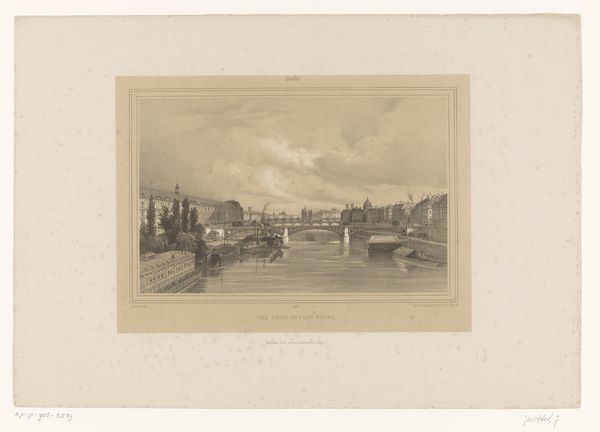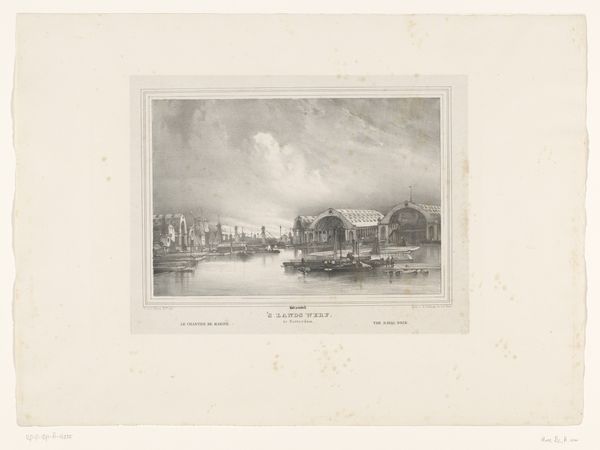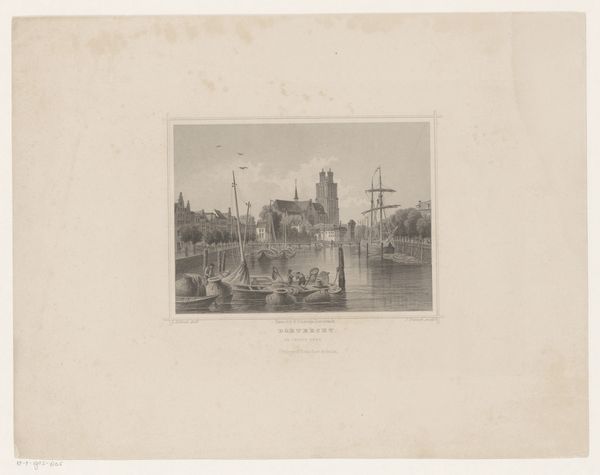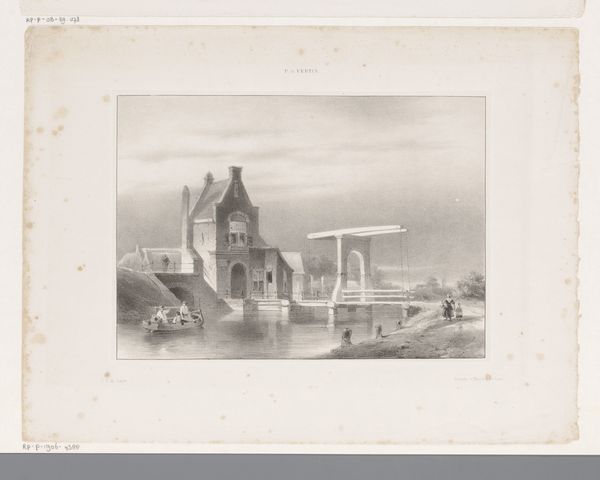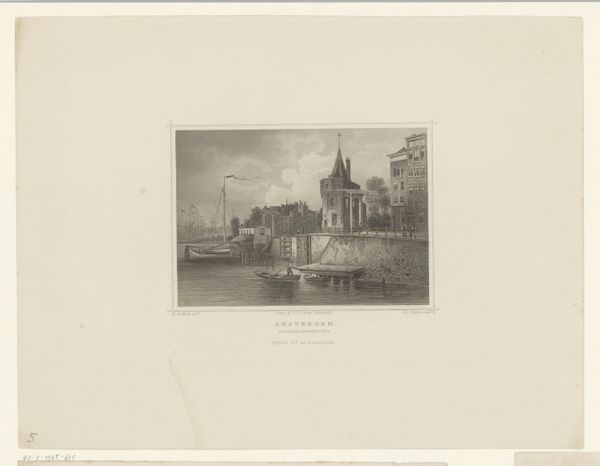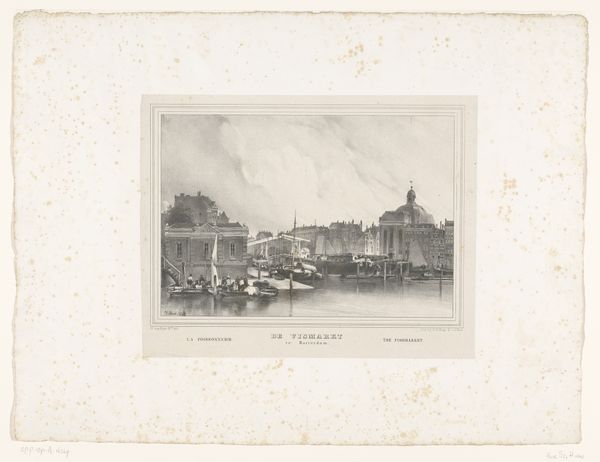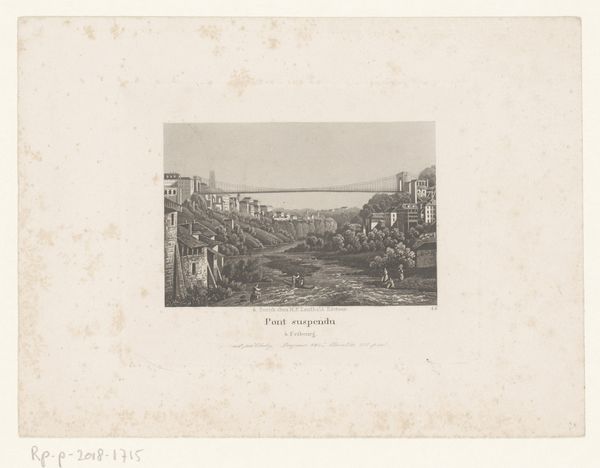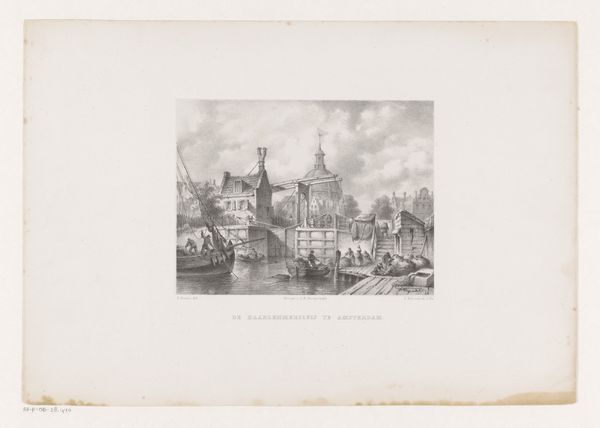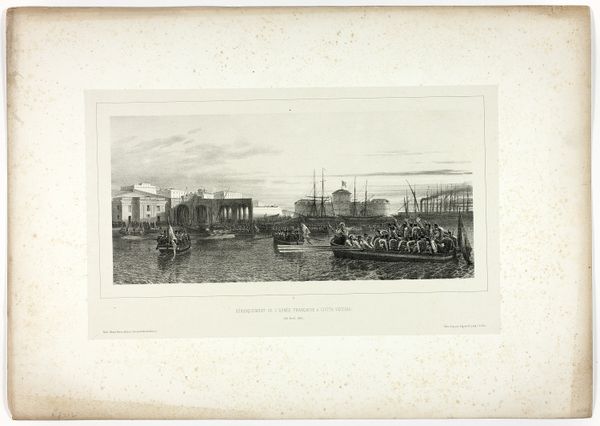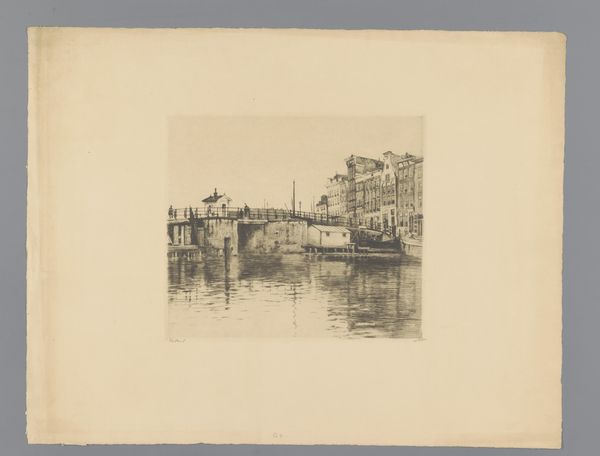
Gezicht op de Korenbeurs in Rotterdam met toekomstvisie van een spoorlijn 1864
0:00
0:00
hendrikfrederiksartor
Rijksmuseum
print, engraving
#
16_19th-century
# print
#
cityscape
#
engraving
#
realism
Dimensions: height 560 mm, width 685 mm
Copyright: Rijks Museum: Open Domain
Curator: This engraving, dating from 1864, offers a glimpse into Rotterdam's aspirations for the future. The artwork is titled "View of the Korenbeurs in Rotterdam with a future vision of a railway line". It's currently held at the Rijksmuseum. Editor: The immediate feeling I get is of ambition tempered by stillness. There's a real calmness in the water reflecting the scene, yet the imposing railway structure suggests change is looming. It's like a poised anticipation. Curator: Exactly! Consider the Korenbeurs itself—a grain exchange—as a symbol of Rotterdam's economic heart. Sartor, the artist, situates it against the backdrop of this projected railway. It suggests a shift from traditional trade to embrace the speed and potential of the industrial age. Editor: So, the railway becomes this very potent symbol of progress. How was something like this generally perceived in that time? I mean, putting a train line right through a city is a big deal. Curator: Precisely! There would have been huge debates. This image, likely commissioned or at least circulated by proponents of the railway, portrays the new infrastructure harmoniously integrated into the existing cityscape. A clean, modern bridge, effortlessly connecting two parts of the city—at least in the ideal future they envisioned. Editor: And look at how the artist renders the water's reflection; everything below feels softer, less defined, which underscores the solid presence of that metallic bridge. It almost splits the world into one of tradition, represented by the boats, and one of this future promised by engineering. The clouds above also contribute to this impression as they become a backdrop to the engineering marvel of the bridge. Curator: It raises the important questions all cities faced at the time. At what cost progress? How do you balance economic growth with preserving the character and heritage of place? It is a conversation many urban centers are still contending with today. Editor: Absolutely, and Sartor, whether intentionally or not, has given us an artifact that encourages reflection on our own urban visions and the narratives they carry. It highlights the continuing negotiation between technological ambition and the tangible world. Curator: I agree; in its stillness, it captures a pivotal moment of transformation and reminds us how powerfully images shape, reflect and reinforce our societal narratives of the future.
Comments
No comments
Be the first to comment and join the conversation on the ultimate creative platform.
